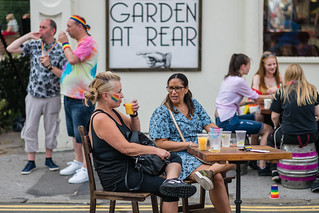Transgender Day of Remembrance (TDOR) is an annual observance on November 20 that honors the memory of the transgender people whose lives were lost in acts of anti-transgender violence.
What is Transgender Day of Remembrance (TDOR)?
Transgender Day of Remembrance (TDOR) was started in 1999 by transgender advocate Gwendolyn Ann Smith as a vigil to honor the memory of Rita Hester, a transgender woman who was killed in 1998. The vigil commemorated all the transgender people lost to violence since Rita Hester’s death, and began an important tradition that has become the annual Transgender Day of Remembrance.
How can people recognize TDOR?
GLAAD will be hosting an online vigil on November 20, 2019 at 10am ET/7am PT on Twitter. There are also events hosted across the country in local communities by advocates.
Importantly, this day is about remembering those who have been lost to anti-transgender violence so learning the names and stories of each transgender person is of highest importance. You can find out more about those lost to anti-transgender violence this year and years past here.
Suggested social copy:
We’re observing Transgender Day of Remembrance, which honors the memory of trans people whose lives were lost in acts of anti-trans violence. #TDOR glaad.org/tdor
Transgender Day of Remembrance honors the memory of the transgender people whose lives were lost in acts of anti-transgender violence. Learn how you can get involved. #TDOR glaad.org/tdor
On Transgender Day of Remembrance, we remember the transgender people whose lives have been lost to anti-transgender violence this year and over the years. #TDOR glaad.org/tdor
Social media graphics can be found at this link.
For greater context:
There is an epidemic of violence targeting the trans community (the American Medical Association has declared in 2019) that disproportionately affects Black trans women and trans women of color. This is a disturbing pattern that persists year over year.
GLAAD has been calling on the media for increased and accurate media coverage for years, which mainstream media has finally started doing. Now, the important part comes to shifting the narrative on transgender homicides to more than a number count. Read our guidance on why.
Specific numbers and variation are inevitable due to misreporting, underreporting, or absence of reporting on these crimes. For GLAAD, we list the names of the transgender people whose lives have been lost to anti-transgender violence, so their gender identity was in involved in the cause of their death. We also have listed those whose deaths are still being investigated as possible homicides.
We recommend for media to use the wording “at least” when referring to the number of deaths because there is no way to count with perfect accuracy given all of the above.
Read this guide to reporting on transgender victims of crime.










